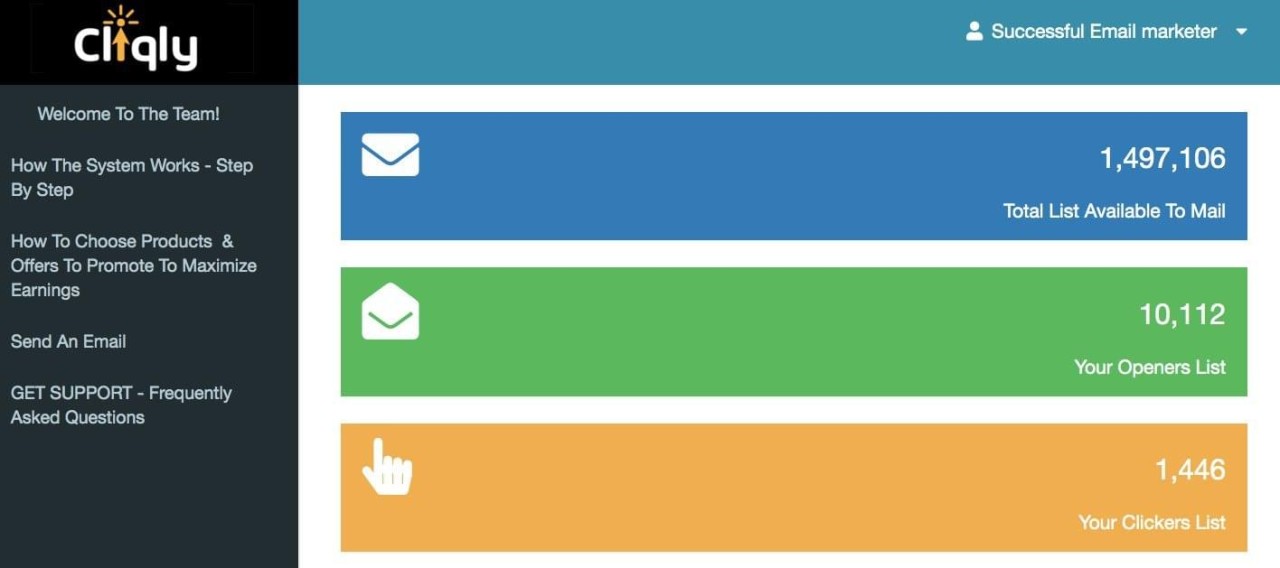General
Conquering Communication: A Guide to Cliqly Login and Beyond

In today’s digital age, email marketing remains a powerful tool for businesses of all sizes. It allows you to connect directly with your audience, promote products and services, and build lasting relationships. But navigating the complexities of email marketing platforms can be daunting. That’s where Cliqly steps in, offering a user-friendly solution for streamlined email campaigns.
This comprehensive guide will equip you with everything you need to know about Cliqly login, navigate the platform’s features, and launch impactful email marketing initiatives.
Getting Started: Cliqly Login Process
Before diving into the world of Cliqly, you’ll need to establish your account. Here’s a breakdown of the login process:
-
Head to the Cliqly website: While there’s no official login page readily available, navigate to the Cliqly website (https://system.cliqly.com/member/login).
-
Explore Membership Options: Cliqly offers a free trial, allowing you to test the platform’s functionalities before committing. You’ll also find paid membership options with varying features and sending limits. Choose the plan that aligns with your business needs.
-
Sign Up for an Account: Click the appropriate signup button (e.g., “Start Your Free Trial”) to initiate the account creation process. You’ll likely be directed to a secure signup form.
-
Fill Out the Signup Form: The form will typically request basic information like your name, email address, and desired password. Ensure you create a strong password for enhanced account security.
-
Verify Your Email Address: Once you submit the signup form, Cliqly will send a verification email to your provided address. Click the verification link within the email to activate your account.
-
Congratulations! You’re now ready to log in to Cliqly.
Unlocking Cliqly’s Interface: A Tour of Key Features
Upon successful login, you’ll be greeted by Cliqly’s user-friendly interface. Let’s explore some of the platform’s core features that will empower your email marketing efforts:
-
Dashboard: Your central hub, the dashboard provides a consolidated view of key metrics like campaign performance, open rates, and click-through rates. This at-a-glance overview allows you to gauge the effectiveness of your email campaigns.
-
Contacts Management: Building an email list is crucial for targeted communication. Cliqly offers robust contact management features. You can import existing contacts from CSV files, create custom fields, and segment your audience based on demographics or interests.
-
Email Templates: Streamline your email creation process with Cliqly’s library of pre-designed templates. These customizable templates cover various email types, ranging from newsletters and welcome messages to promotional campaigns.
-
Drag-and-Drop Editor: Don’t be deterred by complex design tools. Cliqly’s intuitive drag-and-drop editor empowers you to create visually appealing emails without any prior coding knowledge. Simply drag and drop elements like text boxes, images, and buttons to craft engaging content.
-
Automation Features: Take your email marketing to the next level with Cliqly’s automation features. Set up automated email sequences based on user actions or triggers. For example, you can create a welcome email series that automatically sends emails to new subscribers.
-
Reporting and Analytics: Data is king in the marketing world. Cliqly provides comprehensive reporting and analytics tools. Track campaign performance, identify areas for improvement, and refine your email marketing strategy based on valuable insights.
Table 1: Summary of Key Cliqly Features
| Feature | Description | Benefit |
|---|---|---|
| Dashboard | Centralized view of key metrics | Monitor campaign performance at a glance |
| Contact Management | Import, create, and segment contacts | Build targeted email lists |
| Email Templates | Pre-designed templates for various email types | Save time and create professional emails |
| Drag-and-Drop Editor | User-friendly editor with drag-and-drop functionality | Design visually appealing emails without coding |
| Automation Features | Automated email sequences based on triggers | Simplify communication and nurture leads |
| Reporting and Analytics | Track campaign performance and insights | Make data-driven decisions for continuous improvement |
Understanding these features empowers you to leverage Cliqly’s platform for crafting targeted email marketing campaigns that resonate with your audience.
Crafting Compelling Content: Tips for Effective Email Marketing with Cliqly
Now that you’re familiar with the platform’s functionalities, let’s delve into crafting compelling email content:
- Subject Line is King: A captivating subject line is crucial for enticing users to open your email. Keep it concise, informative, and generate a
